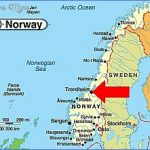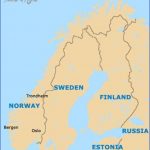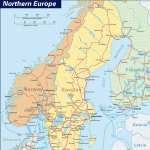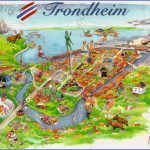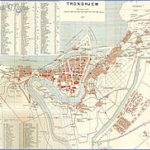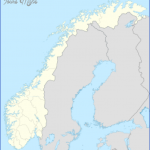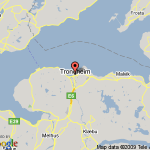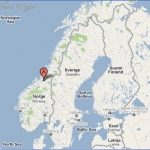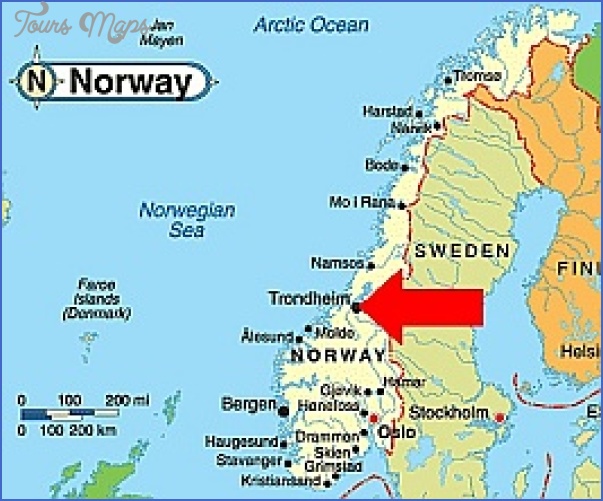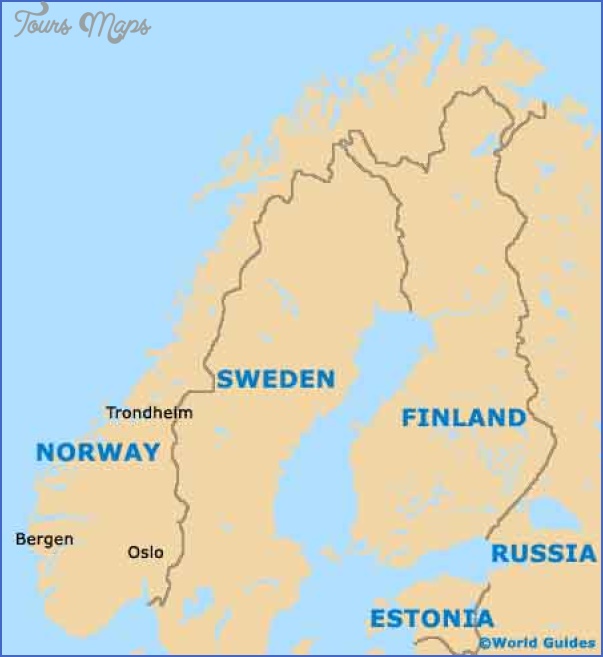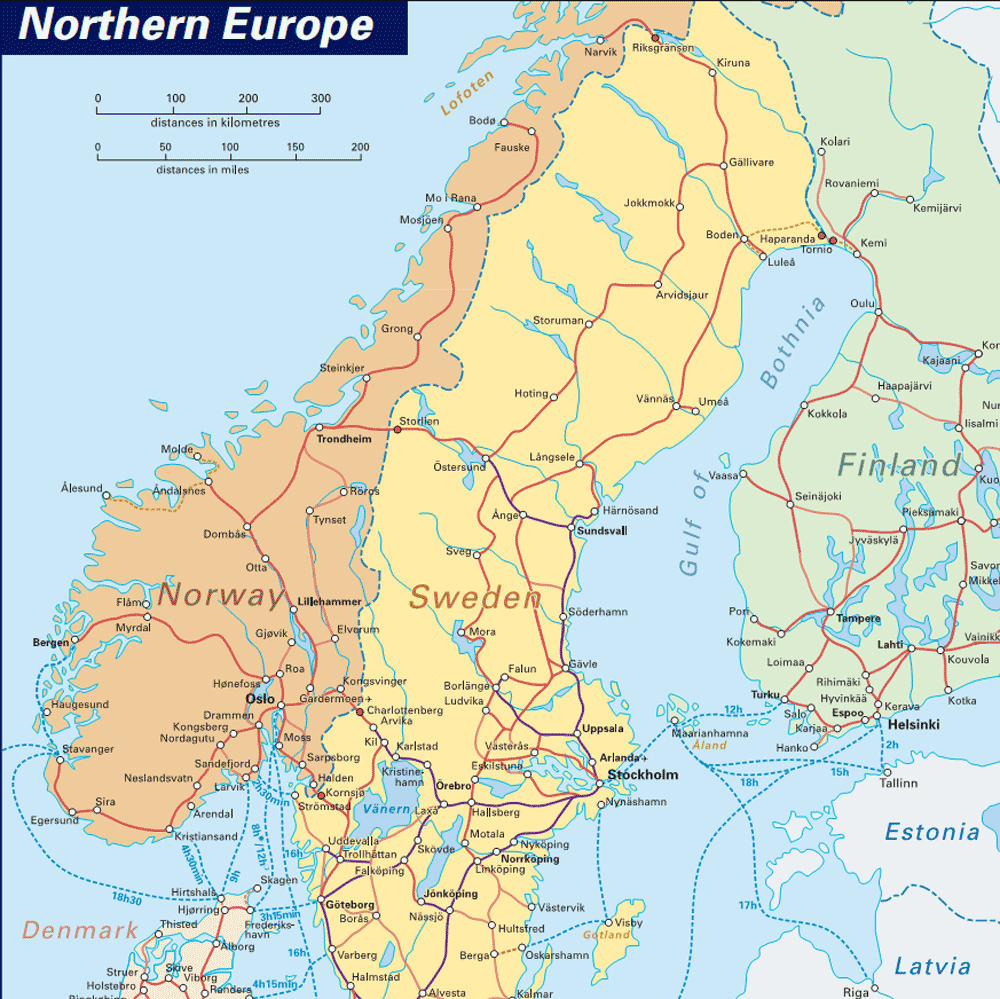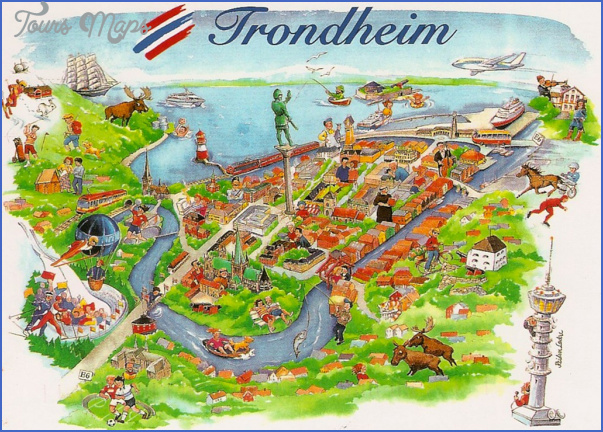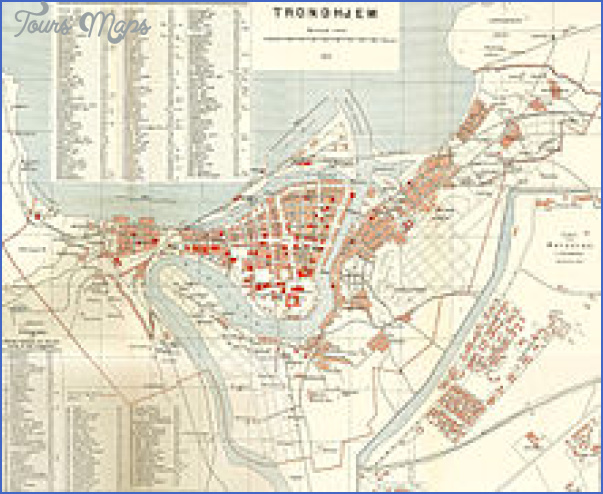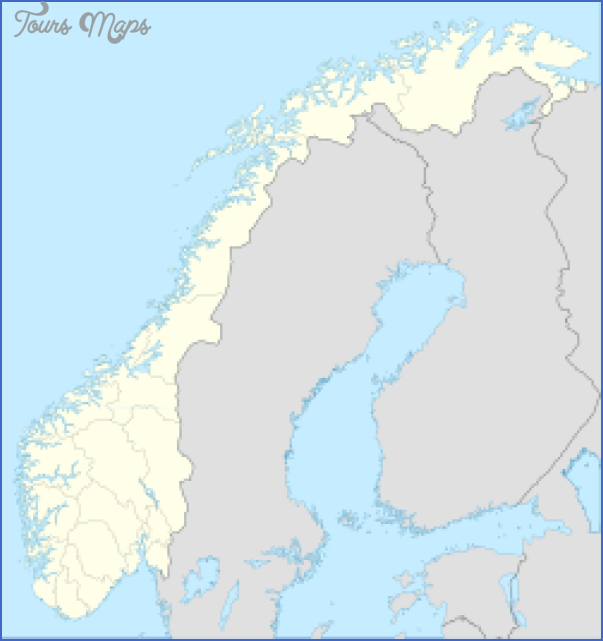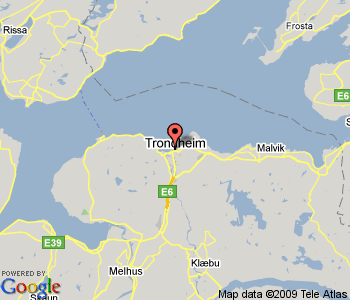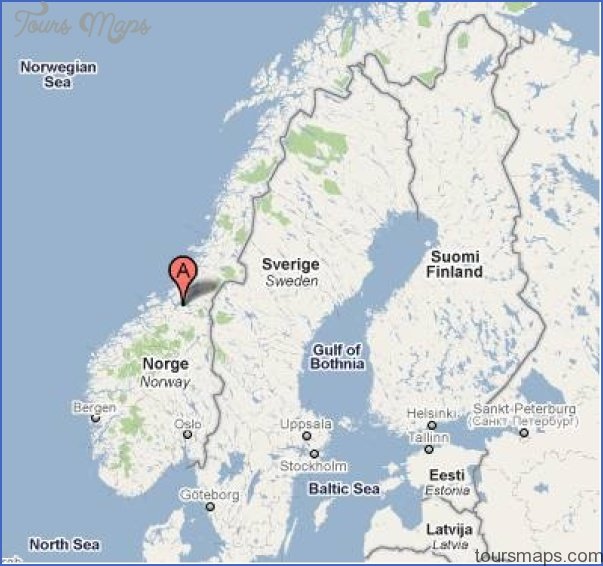County: Sor-Trondelag fylke.
Altitude: sea level. Population: 135,000.
Postal code: N-7000. Telephone code: 0 75.
Reisetrafikkforeningen for Trondheim og Sor-Trondelag,
Hornemannsg§rden; tel. 2 72 01 and 2 58 90.
HOTELS. Astoria, Nordregata 24,1 85 Ambas-sadeur (no rest.), Elvegata 18, 85 Prinsen, Kongensgata 30,110 Britannia, Dronningensgata 5,180 Esso Motor Hotel, Brosetveien 186, 210 Nye Sentrum, Cigignons Plass, 56 Gildevangen, Sondregata 22B, 71 Neptun, Thomas Angellsgata 12B, 65 Norrona, Thomas Agellsgata 20,35 I Ml Missonshotell, Kongensgata 26, 110 Singsaker Studenterhjem, Rogersgata 1, 200 Tronderheimen, Kongensgata 15,77 Larssens, Thomas Angellsgata 10B, 50 b. YOUTH HOSTEL. Several CAMP SITES.
RESTAURANTS. Cavalero, Kongensgata 3; Gal-leyen, Dronningensgata 12 (open 24 hours; discotheque); Grenaderen, KongsgSrden; Munken Kro, Munkegata 25 (Italian); Naustloftet, Prinsensgata 42 (fish specialties); Rotisseriet 1842, Prinsensgata 38; Trubadur, Kongensgata 34; Vertshuset Tavern, Sver-resborg (building dating from 1739).
SPORTS and RECREATION. Sea-angling, freshwater fishing; golf.
Trondheim, Norway’s third largest city, lies in lat. 63°25′ N and long. 10°33′ E, in an inlet on the S side of the Trondheimfjord, surrounded by fine hills. The town is on a peninsula formed by the Nidelv which is linked with the mainland only on the W side. Trondheim is the main town in the county of Sor-Trondelag and the see of both a Lutheran and Roman Catholic bishop, with a number of scientific and educational institutions.
The favourable temperature conditions (January mean rarely below 3 °C27 °F) ensure that the fjord is always ice-free and I Statue of Olav Tryggvason 2 Museum of Applied Art 3 Art Union 4 Society of Sciences promote a rich growth of vegetation. The principal industries are foodstuffs, metalworking and engineering. The town’s main exports are fish products and canned fish.
HISTORY. Trondheim (formerly spelt Trondhjem) was originally the name of a small settlement at the entrance to Trondheimfjord in the area known as Trondeiag. It had, for centuries, been the place of the main Ting, at which disputes were settled and the local Jarls (princes or earls) were elected. From the time of Harald I (the Fairhair) it achieved greater eminence as the Qreting at which the rulers of his line were elected king of Norway, though usually after a good deal of in-fighting.
In 997 Harald’s great-grandson, Olav Trygvesson (or Trygvasson), landed there to claim succession to the throne. He was immediately recognised as king by the Trondeiag people, though they subsequently fought against him largely because of the enforced Christianisation he made. Within two years he was acknowledged as king of the then-known Norway. In 997, after having built a fortified residence, he built the Church of St Clement near the outlet of the River Nid (Nidaros). Olav Trygvesson died in battle in 1000 and for sixteen years there was an interregnum with Jarls in all districts proclaiming themselves kings. Olav I’s heir, Olav II, fled to England. He sailed from England in 1016 intending to land at Oslo, but, blown from his course by a gale, he landed at Sunnfjord and then after a famous battle at Nesjar, sailed all along the west coast, was acclaimed at all the Tings and set the seal of his kingship of Norway at the Qreting in Trondheim. Olav I I’s was a troubled reign though a very significant one. He established Christianity in Norway on a firm basis and, having a passion for order and security, promulgated a series of laws, still referred to as Olav’s
Lade Laws, gained the support of the peasants, but alienated the nobles so that in 1027 there was a general rising; he fled to Russia and the Danish-English King Canute, by the invitation of the nobles, was acclaimed king of Norway at the Qreting in Trondheim. Olav returned in 1030, was decisively beaten at the battle of Stiklestad and his body brought back to the Church of St Clement at Nidaros. Within weeks it was proclaimed that miracles were taking place at Olav’s tomb and within a short time Olav II was recognised as Olav the Saint and the ”Church of Nidaros at Trondheim as the holiest church in Norway. This began the town’s greatest period of wealth and glory when crowds of pilgrims swarmed to the shrine of the king, now declared a saint, and the cult of St Olav made Trondheim the largest and wealthiest town in the country. In addition to the Cathedral, nine other churches and five religious houses were built in the town. In about 1200 Hakon VI removed his court to Bergen, so making that town the capital of Norway. The Reformation put an end to the pilgrimages; the saint’s shrine was removed to Denmark and destroyed; his remains were buried at an unknown spot within the Cathedral. Almost all the churches and convents disappeared. The town was destroyed by fire, either wholly or partially, no fewer than fifteen times; in spite of all this, it was still as large as Oslo at the beginning of the 19th c. with a population of 9500. The coming of the railway, connecting the town to the rest of the Norwegian railway system (1877) and with the Swedish system (1881), began a period of rapid growth. The Storting (Parliament) decided that from 1 January 1930, the town should be known by its old name of Nidaros; this decision was reversed in February ofthe following year due to popular preference for the name of Trondheim (the spelling adopted in place of the previous Trondhjem).
SIGHTS. The central feature of the town and the hub of its traffic is the Market Square (Torget), at the intersection of the two main traffic routes, Kongensgata and Munkegata. In the square, on a high octagonal base, is a prominent statue of Olav Tryggvason (1923). At the foot of the monuments are letters marking the cardinal compass points (N V S 0).
From the Market Square, Munkegata runs S to the Cathedral. On the right (No. 20), is the handsome Tinghus (1951), with two bronze doors and coloured ceramic reliefs depicting the town’s history. Beyond this, on the right (No. 8), is the Cathedral School, in an 18th c. brick building. On the opposite side ofthe street is the Nordenfjeldske Kunstindustri-museum (Museum of Applied Art). To the S is the Radhus (Town Hall).
The Cathedral (Domkirke) was built by King Olav Kyrre (1066-93) over the tomb of St Olav. It was greatly enlarged after the establishment in 1151 of the archbishopric of Nidaros, with authority over the whole of Norway. In conception and execution, the Cathedral is the most splendid church in the Scandinavian countries. The transept and chapterhouse are in a late Romanesque transitional style influenced by the Norman architecture of England; the early Gothic domed octagon is from the same period. The long choir (beautiful S doorway) was built in the early 13th the massive nave and the tower, also in Gothic style, date from 1230-80. After being ravaged by fire in 1 531,1708 and 1719, the whole western end of the church beyond the transepts was reduced to ruin. The reawakening of national consciousness in the 19th c. however, saved the Cathedral from total destruction. Restoration work began in 1869, and on 28 July 1930, the 900th anniversary of St Olav’s death, the church was re-consecrated. The organ (1930, Baroque case) was moved to a new position under the rose window in 1963, and the W front was restored between 1914 and 1968. The Cathedral is built of bluish-grey soapstone (Norwegian kle-bersten) quarried to the S and E of Trondheim. In the 11 th and 1 2th c. the Cathedral became the burial-place of Norwegian kings; a number of kings were crowned here in the 15th c. and, since 1814, Norwegian monarchs have been required, under the Constitution, to be proclaimed in Trondheim Cathedral.
Trondheim Norway Map Photo Gallery
Maybe You Like Them Too
- The Best Cities To Visit in The World
- World’s 10 Best Places To Visit
- Coolest Countries in the World to Visit
- Travel to Santorini, Greece
- Map of Barbados – Holiday in Barbados

